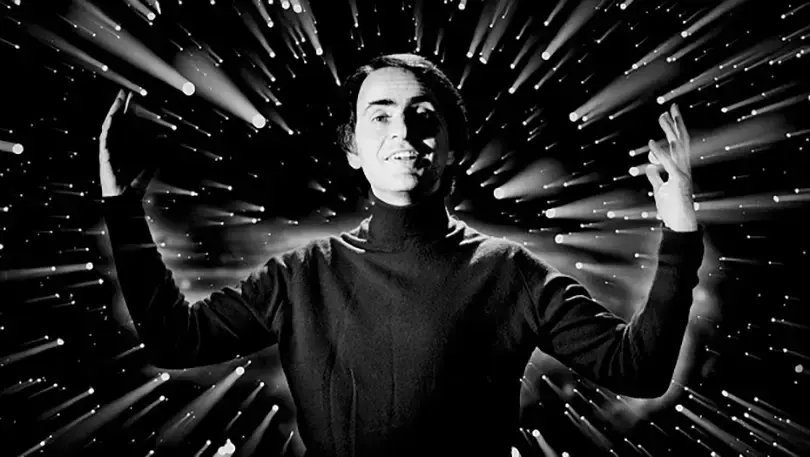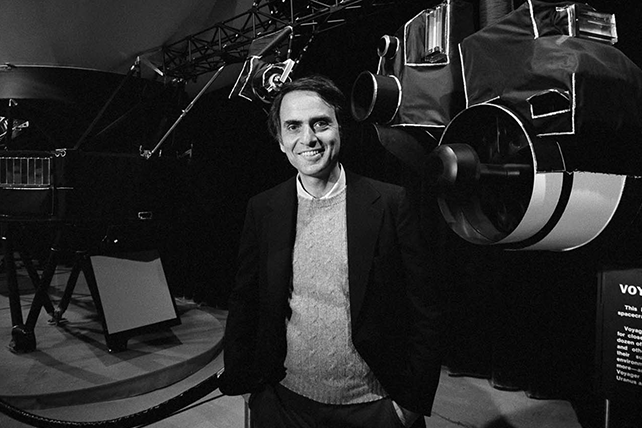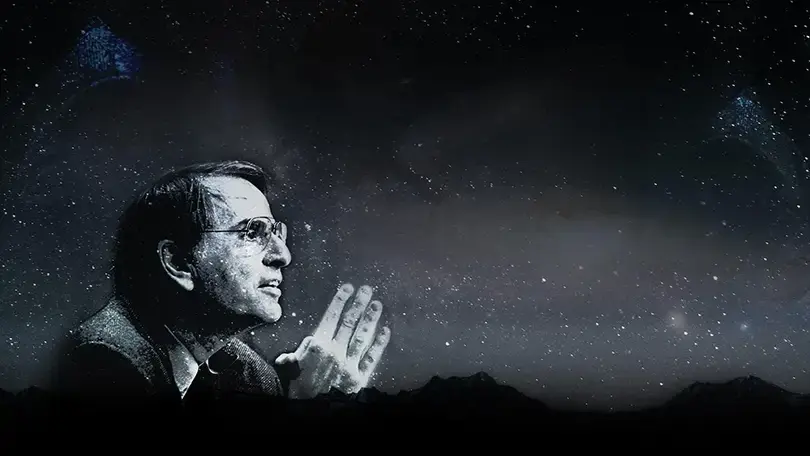Some people change the world with inventions, discoveries, or revolutions.
And then there are those who change how we look at the world—and everything beyond it.
Carl Sagan was one of them.
He wasn’t just an astronomer or a science communicator—he was a poet of the cosmos, a philosopher of the stars, a man who reminded humanity that “we are made of star stuff.”
In an era of noise, ambition, and loud names, Sagan spoke softly—but his voice reached the stars. His goal was not to conquer the universe, but to remind us that we are part of it.
A Voice Among the Stars
Carl Sagan was born in Brooklyn in 1934, gazing at the night sky above New York—when you could still see stars through the city lights.
What set him apart wasn’t just curiosity, but a sense of awe.
He believed science wasn’t merely a collection of facts—it was a spiritual journey, a way to understand who we are and where we come from.
When Cosmos: A Personal Voyage premiered on PBS in 1980, America had never seen anything like it.
Over 500 million viewers around the world tuned in—not just to learn about quasars and black holes, but to feel wonder.
Sagan’s calm, assured voice guided audiences through time and space, turning astrophysics into poetry and data into awe.
One of his most iconic moments came from a photograph taken by Voyager 1 in 1990—a tiny speck of light, suspended in a sunbeam.
That image became known as the Pale Blue Dot.
“Look again at that dot,” Sagan said. “That’s here. That’s home. That’s us.”
Those few words became a moral compass for humanity—a reminder of how small, fragile, and deeply connected we all are.

A Scientist Who Stayed Human
Sagan became a legend because he never separated intellect from empathy.
To him, science wasn’t cold—it was deeply human.
He spoke out against the nuclear arms race, warned of climate change long before it was mainstream, and cautioned against ignorance, fanaticism, and arrogance—whether in politics or religion.
In the depths of the Cold War, when fear ruled decisions, Sagan dared to dream of peace.
He believed that our shared vulnerability on this “pale blue dot” should unite us more strongly than any border could divide.
He saw space exploration not just as a technological mission, but as a moral act.
“Science is not only compatible with spirituality,” he wrote, “it is a profound source of spirituality.”
California and the Cosmic Imagination
It’s no coincidence that Sagan’s legacy still burns brightest in California—the land of dreamers, scientists, and storytellers.
Engineers in Silicon Valley, NASA scientists in Pasadena, filmmakers in Hollywood—all carry traces of his influence.
Without Sagan, there might be no Interstellar, no Contact, no SpaceX vision of Mars that blends technology with meaning.
California became the landscape of his philosophy—a place where curiosity meets creativity, where science is part of everyday wonder.
In the age of artificial intelligence, his words sound almost prophetic.
Sagan believed that intelligence—human or machine—should serve compassion, not ego.
“Our planet is a lonely speck in the great enveloping cosmic dark,” he wrote.
“To survive, we must learn humility… and love.”

The Legacy of the Pale Blue Dot
Carl Sagan died in 1996, but his presence never vanished.
His books—Cosmos, The Demon-Haunted World, Contact—are still read, quoted, and gifted.
He proved that science can be lyrical, that reason can coexist with wonder.
He inspired millions to see that skepticism and hope are not enemies, but partners in progress.
Today, as humanity once again looks to the stars, building rockets and dreaming of new worlds, Sagan’s voice echoes once more:
“It is far better to grasp the Universe as it really is than to persist in delusion, however satisfying and reassuring.”
In every lab, every observatory, every classroom—and in every curious child—there’s a spark of Carl Sagan.
He taught us that exploring space isn’t about escaping Earth—it’s about understanding it.
He made the infinite feel close.
He made the cosmos our home.






